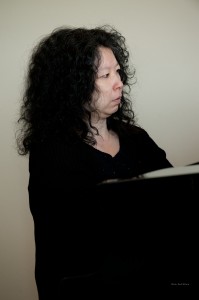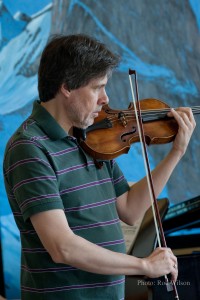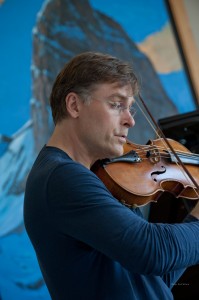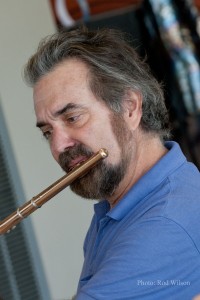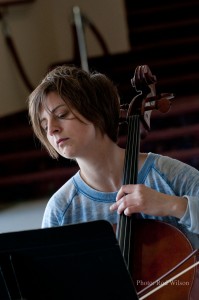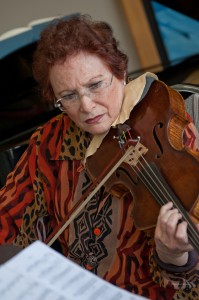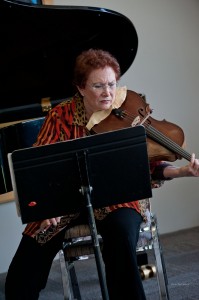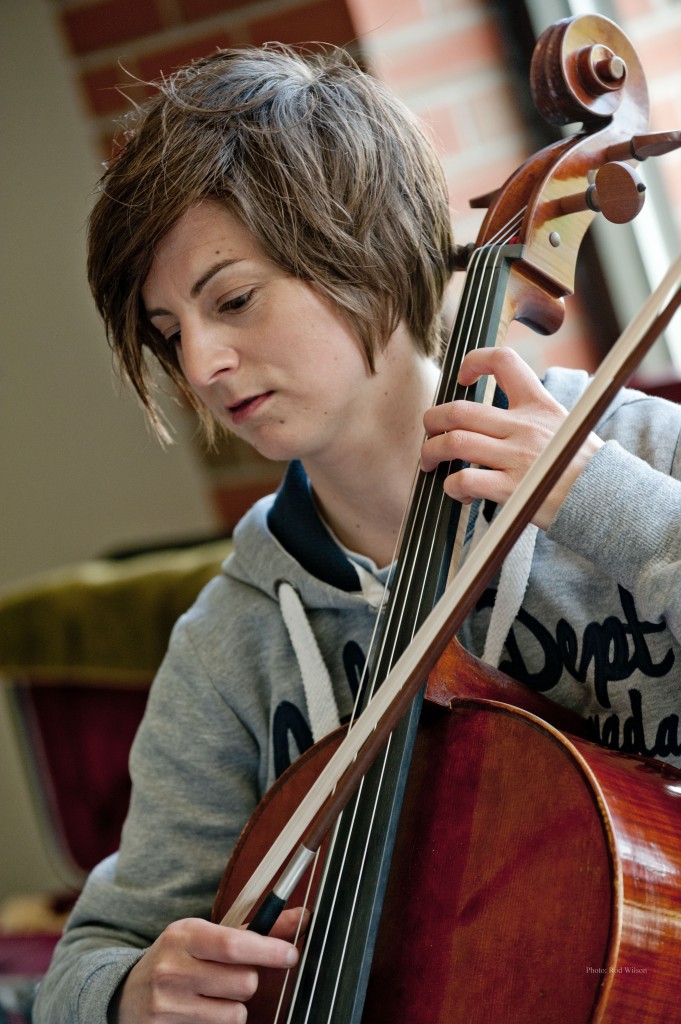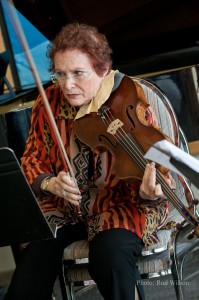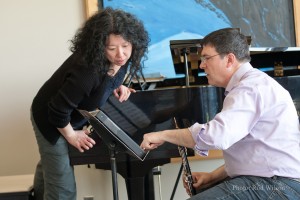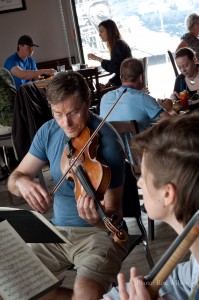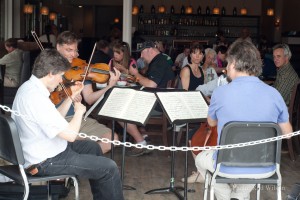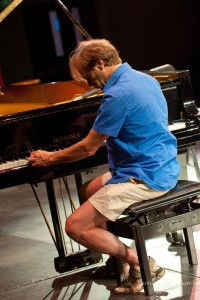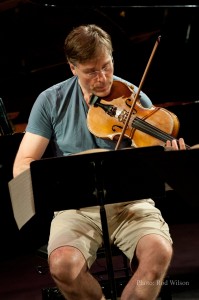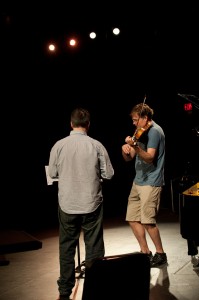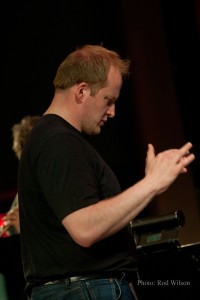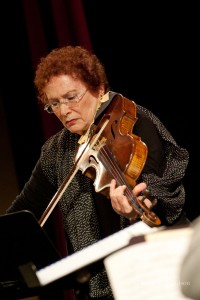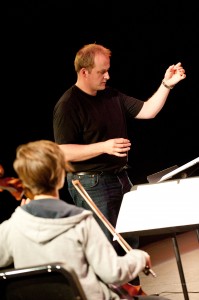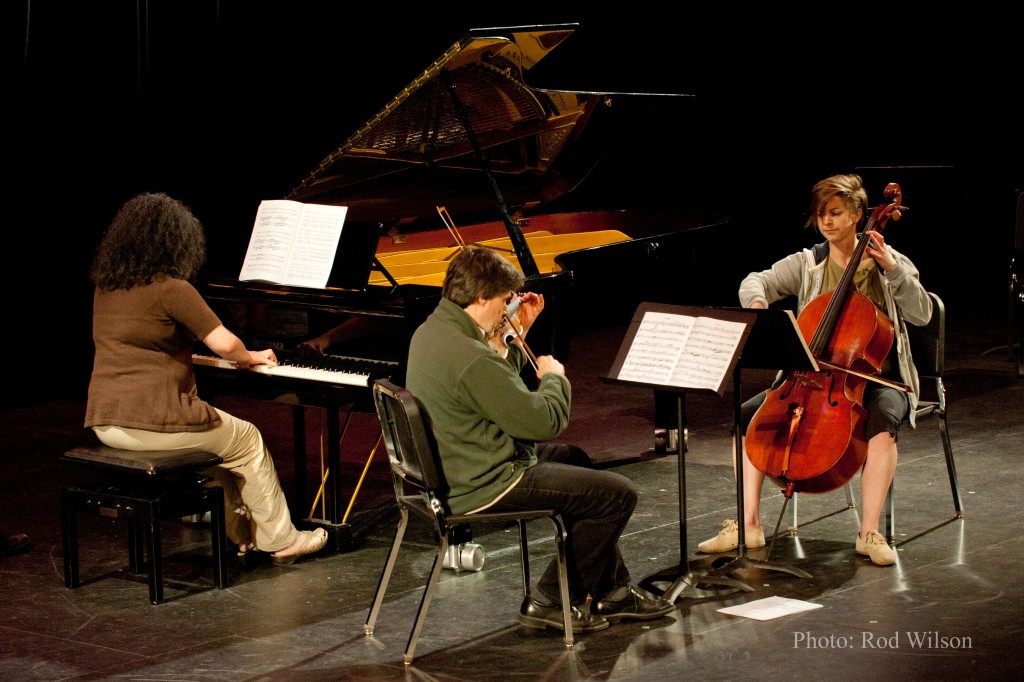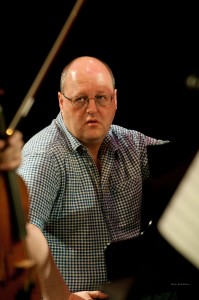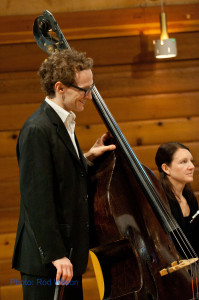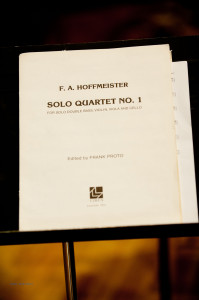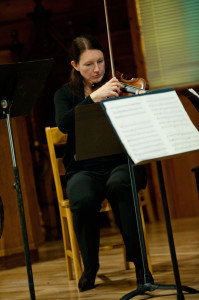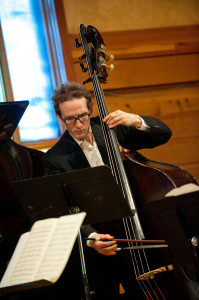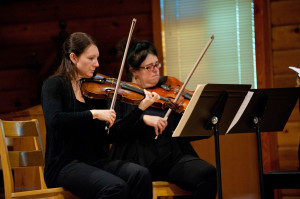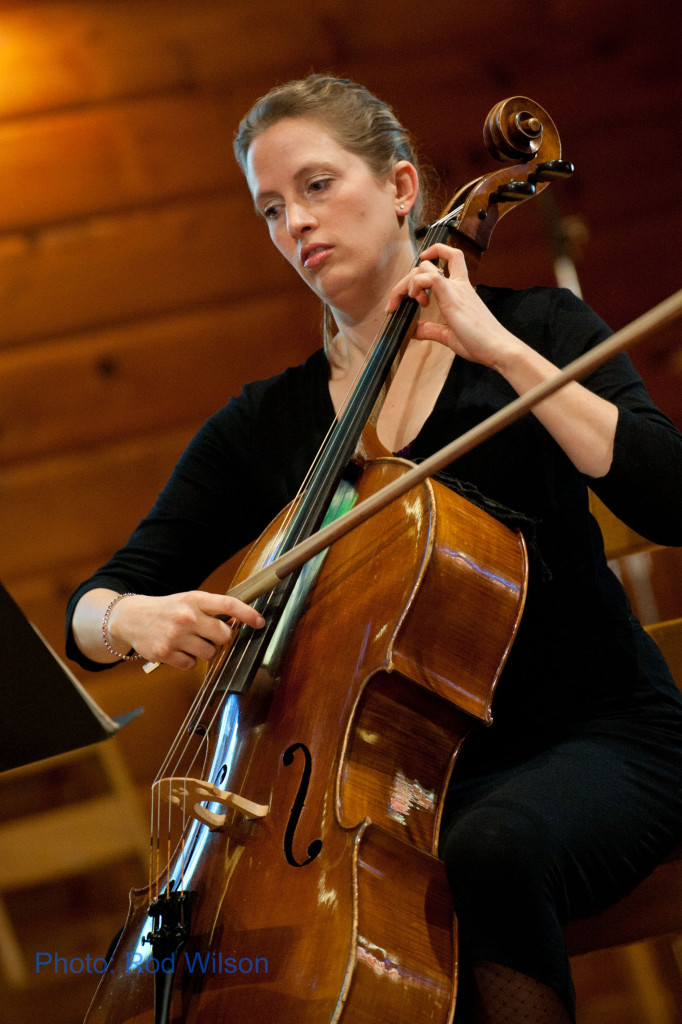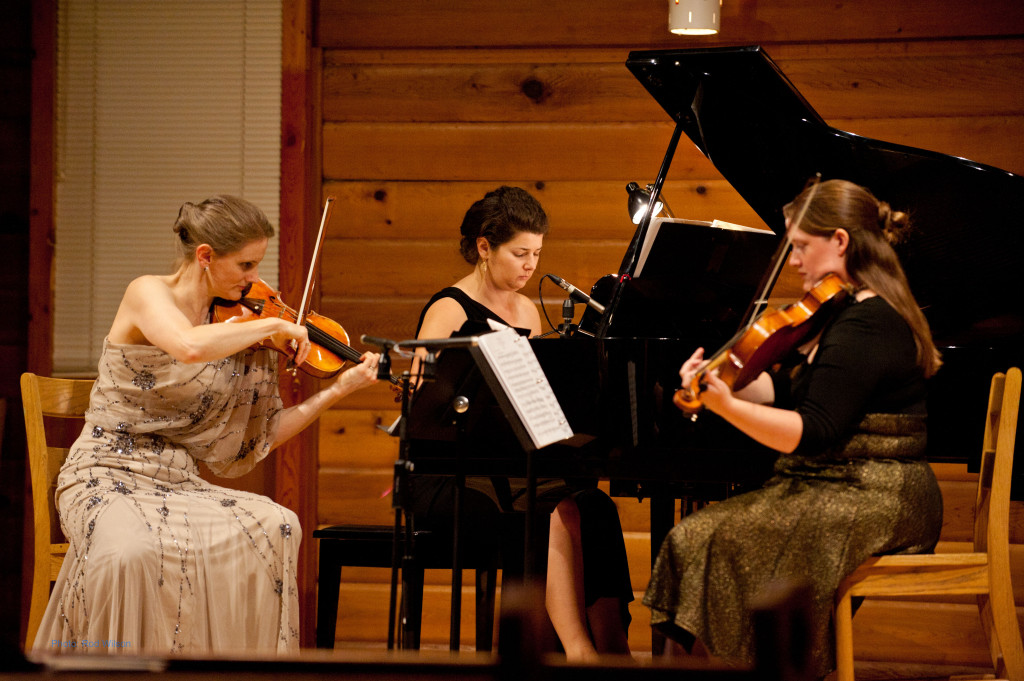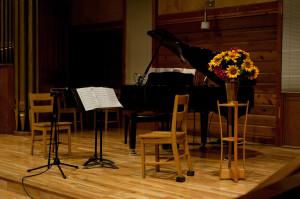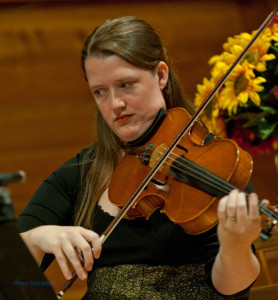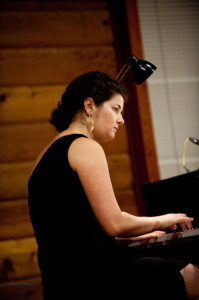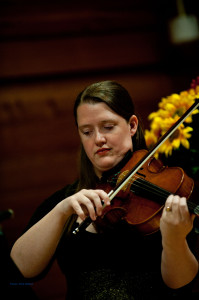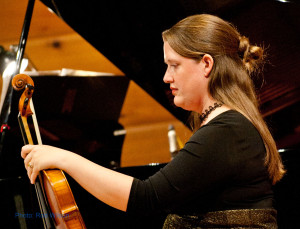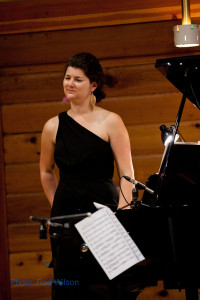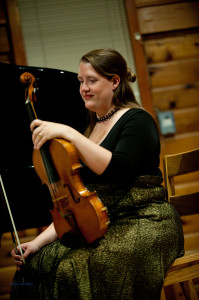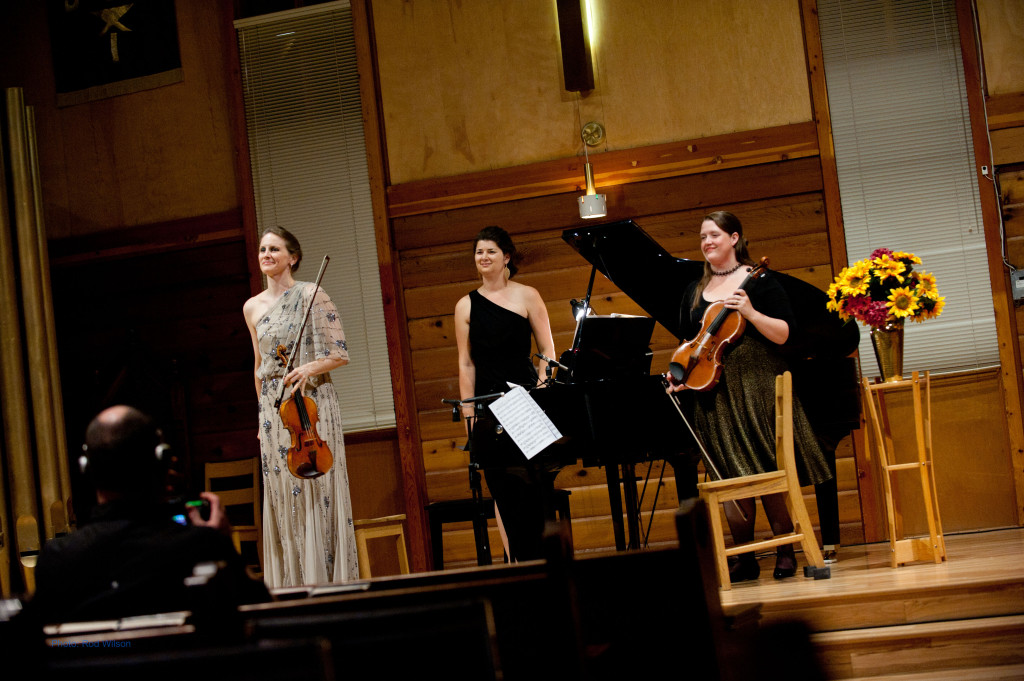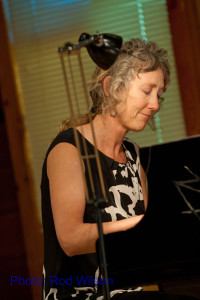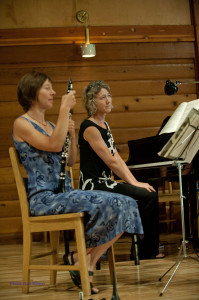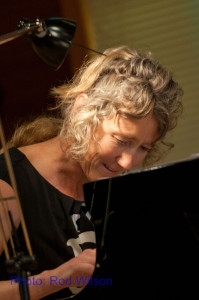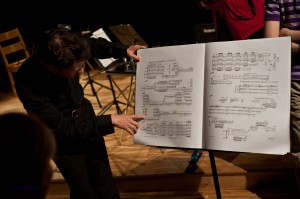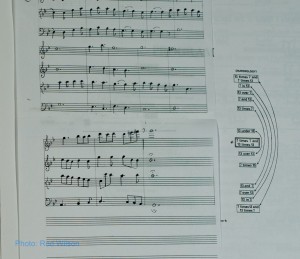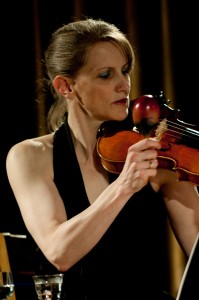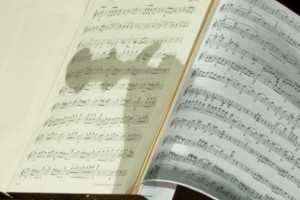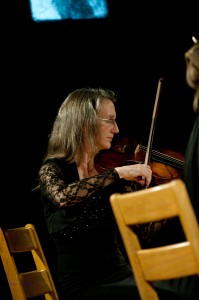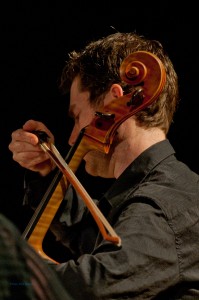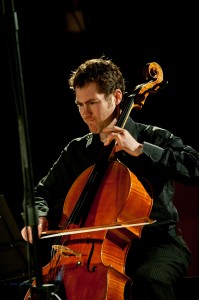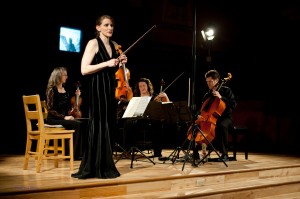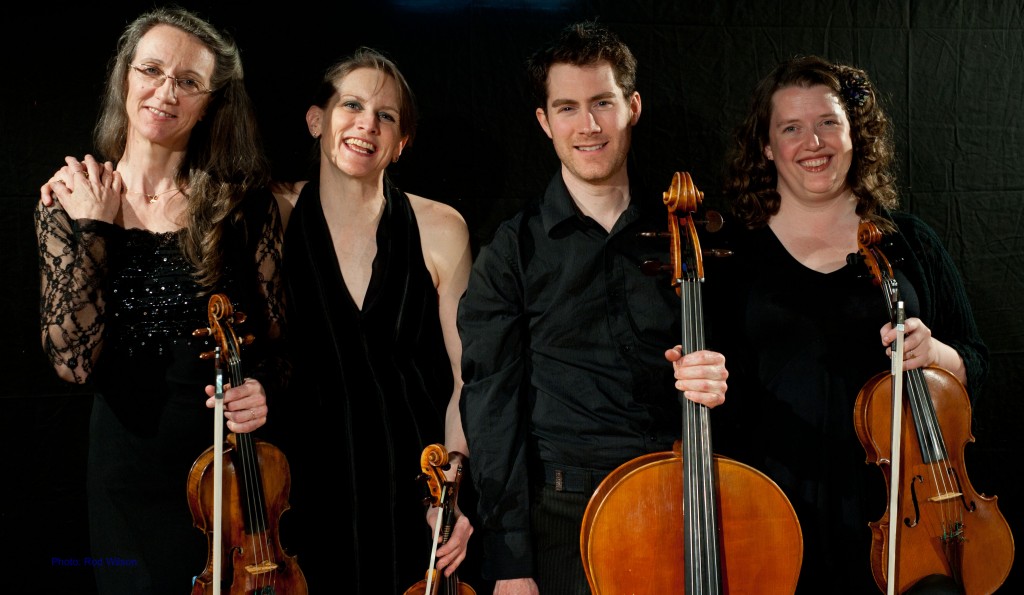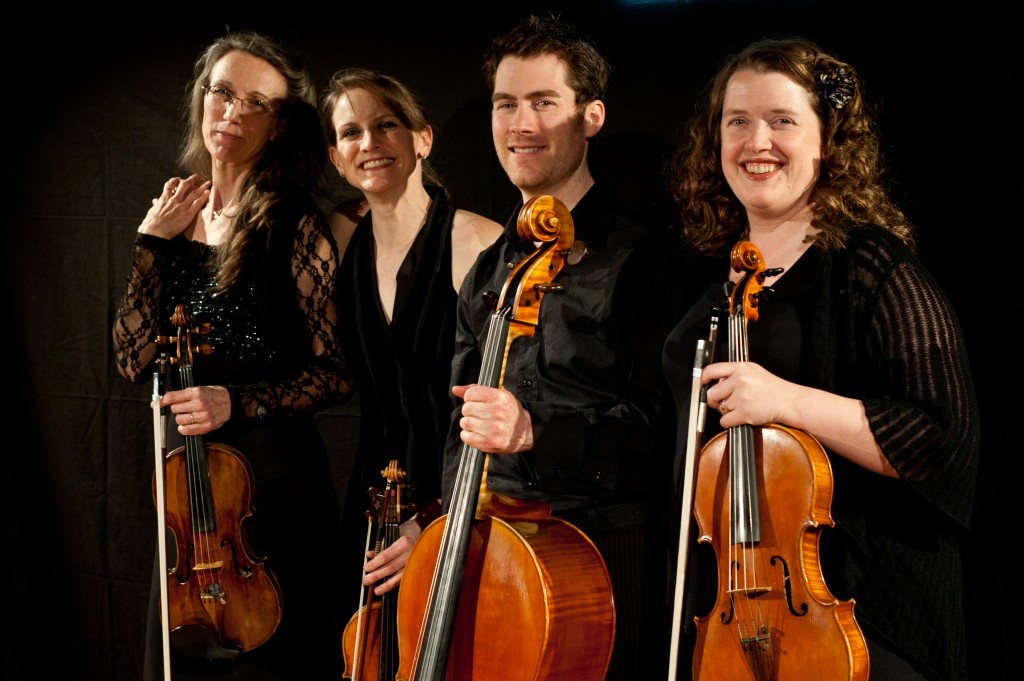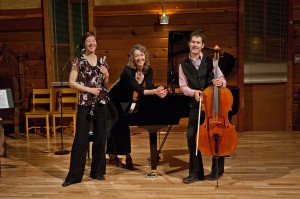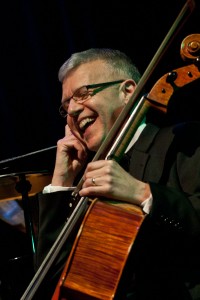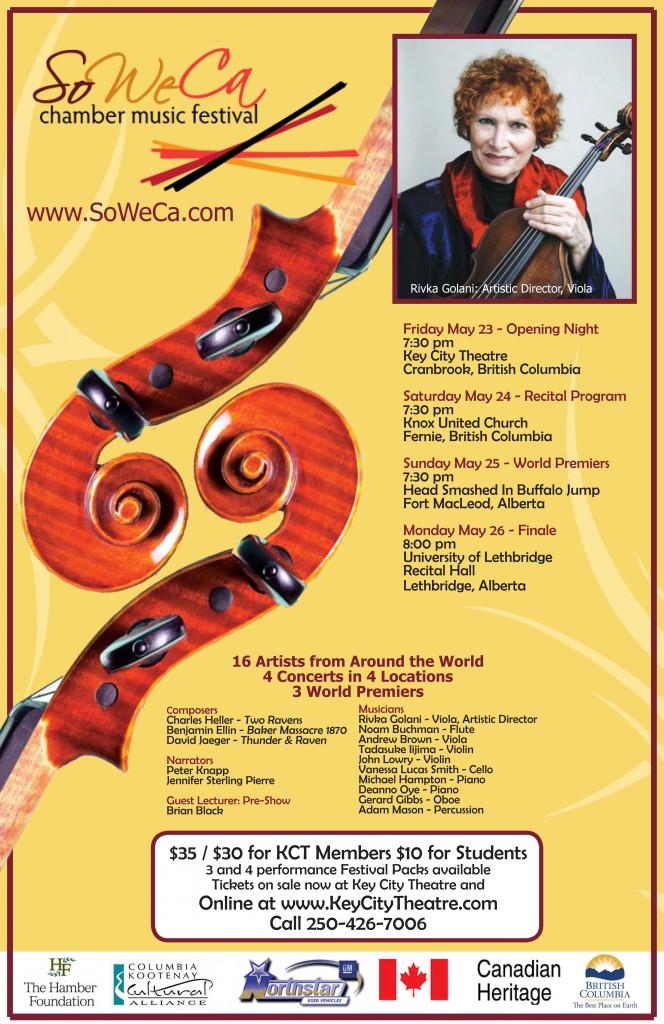 It is unfortunate, in a way, that the idea of “Classical Music” is so entwined with Symphony Orchestras and Symphonic Music when in actual fact there is so much more to “Classical Music” than what we normally associate with the term. Symphonic music is fine but it does imply a certain largeness of magnitude in the music, the organization and the means to bring it to an audience. It has introduced a distortion that implies that only truly good music can be produced by a symphonic orchestra. Case in point is the recent angst and anguish caused by the possible demise of the EK Symphony Orchestra. The possible demise of that orchestra was equated with the end of local “high” culture. Yet in actual fact over the past 4-5 years some very successful small scale efforts by local chamber musicians has introduced some very exciting and adventurous music to local audiences. The La Cafamore String Quartet, Trio and Quintet, and Calgary’s Lily Quartet have performed concerts at the Knox Presbyterian Church (a wonderful chamber music venue) that included the music of Brahms, Beethoven, Haydn, Mozart, Schumann, Schubert and more importantly the modern works of Kodaly, Steve Reich (“Different Trains”) and George Crumb (“Black Angels”). These musicians have achieved a level of musical diversity and excellence without any significant financial or audience support from Symphony organizers. In the face of significant adversity they should be commended. So, at the end of a very successful season the symphony orchestra is back on its feet and that is a good thing. And, with the expansion of the SoWeCa Chamber Music Festival into the Kootenays, things are looking even better. SoWeCa has been around for a number years in Southern Alberta and this is the first year that Cranbrook has been added to the circuit. This week (Monday 19th to Friday 23rd) in May 2014 has marked a full schedule of rehearsals and performances in Cranbrook.
It is unfortunate, in a way, that the idea of “Classical Music” is so entwined with Symphony Orchestras and Symphonic Music when in actual fact there is so much more to “Classical Music” than what we normally associate with the term. Symphonic music is fine but it does imply a certain largeness of magnitude in the music, the organization and the means to bring it to an audience. It has introduced a distortion that implies that only truly good music can be produced by a symphonic orchestra. Case in point is the recent angst and anguish caused by the possible demise of the EK Symphony Orchestra. The possible demise of that orchestra was equated with the end of local “high” culture. Yet in actual fact over the past 4-5 years some very successful small scale efforts by local chamber musicians has introduced some very exciting and adventurous music to local audiences. The La Cafamore String Quartet, Trio and Quintet, and Calgary’s Lily Quartet have performed concerts at the Knox Presbyterian Church (a wonderful chamber music venue) that included the music of Brahms, Beethoven, Haydn, Mozart, Schumann, Schubert and more importantly the modern works of Kodaly, Steve Reich (“Different Trains”) and George Crumb (“Black Angels”). These musicians have achieved a level of musical diversity and excellence without any significant financial or audience support from Symphony organizers. In the face of significant adversity they should be commended. So, at the end of a very successful season the symphony orchestra is back on its feet and that is a good thing. And, with the expansion of the SoWeCa Chamber Music Festival into the Kootenays, things are looking even better. SoWeCa has been around for a number years in Southern Alberta and this is the first year that Cranbrook has been added to the circuit. This week (Monday 19th to Friday 23rd) in May 2014 has marked a full schedule of rehearsals and performances in Cranbrook.
Act I – Cranbrook B.C
The Players: The musicians are from diverse backgrounds and geographic locations and are all major “players” in their own right.
- Deanna Oye – Piano. Deanna is the Associate Professor and Chair of the Department of Music at the University of Lethbridge. Over the years she has performed at the College of the Rockies in Cranbrook a number of times.
- Gerard Gibbs – Oboe.
Gerard is a professional oboist who has studied and performed throughout the USA, Canada and the United Kingdom. He is currently the manager of the Key City Theatre in Cranbrook and is one of the principal organizers of the SoWeCa Chamber Music Festival - John Lowry – Violin
John has been the Associate Concertmaster of the Calgary Philharmonic Orchestra since 1987. He has also performed as a guest Concertmaster in many Canadian orchestras as well as the Adelaide Symphony Orchestra in Australia.
- Andrew Brown – Viola. Andrew is the Associate Principal Violist of the Vancouver Symphony Orchestra and has been a member of the CBC Radio Orchestra for over 18 years. Apart from his heavy involvement in the Vancouver music scene he has performed widely throughout North America, China and Korea.
- Noam Buchman – Flute
Is a highly-acclaimed flautist from Israel. He has performed in concert and recordings most of the existing repertoire for flute.Along with his extensive performing career he teaches flute at the Jerusalem Academy of Music. - Michael Hampton – Piano. Michael performs regularly on major stages around the world, including Wigmore Hall and Carnegie Hall, and broadcasts frequently on radio. He works both as a soloist and chamber musician.
- Tadasuke Lijima – Violin
Tadasuke was born in Japan and studied under the guidance of Hitoshi Maezawa, Boris Kuschnir, Toshiya Eto, Zakhar Bron and Mayumi Fukijawa. He is currently studying under the direction of Rivka Golani at Trinity Laban Conservatoire of Music and Dance. He ha won many prizes and has appeared with a number of major symphony orchestras. - Vanessa Lucas-Smith – Cello
Vanessa is a “Brit” who began her studies at the Royal College of Music. She is also a graduate of the Royal Northern College of Music. She has a passion for chamber music, has won many prizes and is a founding member of the Brodowski Quartet. - Rivka Golani – Viola
Rivka is recognized as one of the great violists of modern times and she is the Musical Director of this festival . She plays with passion and fire and, in the vernacular, she is “a rock star”. Be prepared to be swept away by her performances during the festival. What more can one say?
- Peter Knapp – Narrator
Essentially he is a vocalist who has performed though out the world (Frankfurt, Zurich, Bulgaria, St. Louis, Hong Kong, Venice, Australia and South America) with many companies including his own. I believe he will be doing some vocal coaching and teaching during the festival. - Benjamin Ellin – Composer and Conductor
Benjamin is an award winning and critically acclaimed British conductor and composer. He is currently the Musical Director of Thursford Productions, Principal Conductor of the Strathwaite Philharmonic Orchestra, Music Director of Focus Opera and President of Pembroke Academy of Music, London. His composition for this Festival is entitled Baker Massacre and will be premiered at Heads Smashed In Buffalo Jump, Fort MacLeod, Alberta, Sunday May 25, 2014. Benjamin will be conducting the premier performance of David Jaeger’s Thunder and Raven. - David Jaeger – Composer (Thunder and Raven).
On reading his extensive resume it is evident that David Jaeger has been in the fore front of modern music for many years. His composition Thunder and Raven for solo flute, viola and chamber ensemble is inspired by a Blackfoot legend and will be premiered at the Key City Theatre in Cranbrook on Friday May 23, 2014.
- Other players include Charles Heller – Composer Two Ravens (it will be premiered at Heads Smashed In Buffalo Jump, Fort MacLeod, Alberta, Sunday May 25, 2014); Fred Stenson (text for Baker Massacre); Jennifer Stirling Pierre – Narrator; Adam Mason – Percussion and Matthew Heller who must be playing the largest Orchestral Bass on the planet.
Act I – Cranbrook Key City Theatre;
Scene I – Rehearsals in the foyer of the Key City Theatre
Here are some images from at least three days of rehearsals.
Scene 2 – Mozart at the Heid Out – A truly pleasant way to spend a lunch time.
Scene 3 – Final Dress Rehearsal On Stage at the Key City Theatre.
First the piano technician:
Then the plot:
- Mozart Quartet in D Major K285 for flute, violin, viola and cello –
Allegro / Adagio / Rondo
Noam Buchman – Flute; Andrew Brown – Viola; Vanessa Lucas-Smith – Cello; John Lowry – Violin
- Robert Kahn (1856-1951) Serenade Op.73 for Oboe, Viola and Piano – Andante sostenuto / Vivace / Andante sosenuto
Gerard Gibbs – Oboe; Andrew Brown – Viola; Deanna Oye
- David Jaeger – Thunder and Raven for solo Flute, Viola, and String Quartet With Movement / Moderato / Interlude – Allegretto / Finale – Andante
Noam Buchman – Flute; Rivka Golani – Viola; Tadasuke Lijima – Violin; John Lowry – Violin; Andrew Brown – Viola; Vanessa Lucas-Smith – Cello; Peter Knapp – Narrator; Benjamin Ellin – Conductor
- Serge Rachmaninoff – Trio elegiaque No.1 Lento lugubre – piu vivo – Lento piu vivo – alla marci funebre
John Lowry – Violin; Vanessa Lucas-Smith – Cello; Deanna Oye – Piano
- Johannes Brahms – Piano Quartet Op. 25 in G minor Allegro / Intermezzo. Allegro / Andante con Motto / Rondo alla Zingarese. Presto
Michael Hampton – Piano; Rivka Golani – Viola; Tadasuke Lijima – Violin; Vanessa Lucas-Smith – Cello.
END OF ACT 1
The remaining acts in the Festival
- Fernie Knox United Church, Saturday – May 24, 2014, 3pm
- Head Smashed in Buffalo, Fort MacLeod, Sunday – May 25th, 2014 7:30pm
- University of Lethbridge Recital Hall, Lethbridge – May 26, 2014 8pm
@@@@@@@@@@
It was unfortunate that prior commitments prevented me from taking in the actual concerts but what I saw and heard was enough to convince me that this had all the ingredients of a very successful event and one hopes that it will happen annually. It was a big deal and it could become even bigger. My favourite performances were Thunder and Raven and the Brahms Quartet. The first was so thoroughly modern that I could not help but enjoy it (I like all the “weird” sounds). As for the Brahms piano quartet, well normally I don’t care for the music of Brahms but this was a real “blood and guts” performance. So much so that later I went through my CD collection and came up with performance by Murray Perahia and the Amadeus Quartet. I have played it almost continuously for the past week.
@@@@@@@@@@

